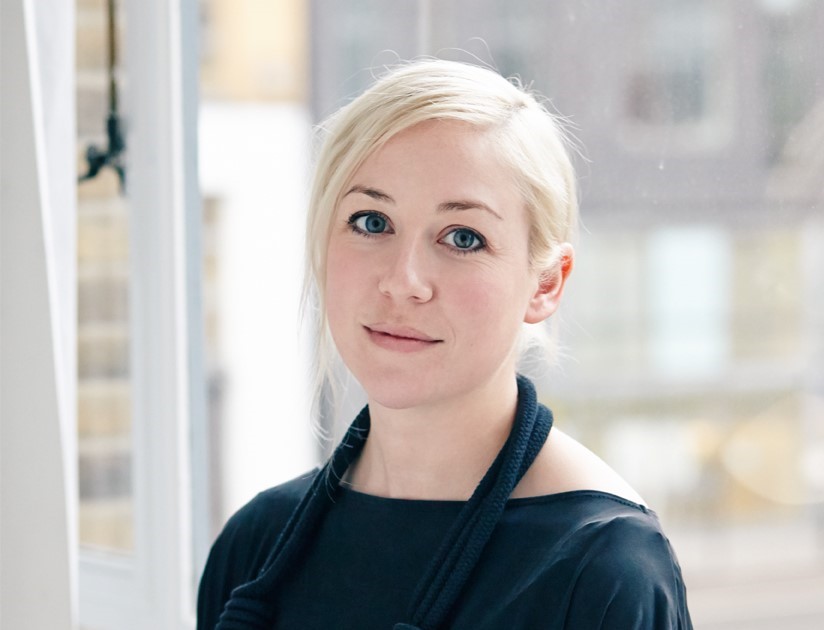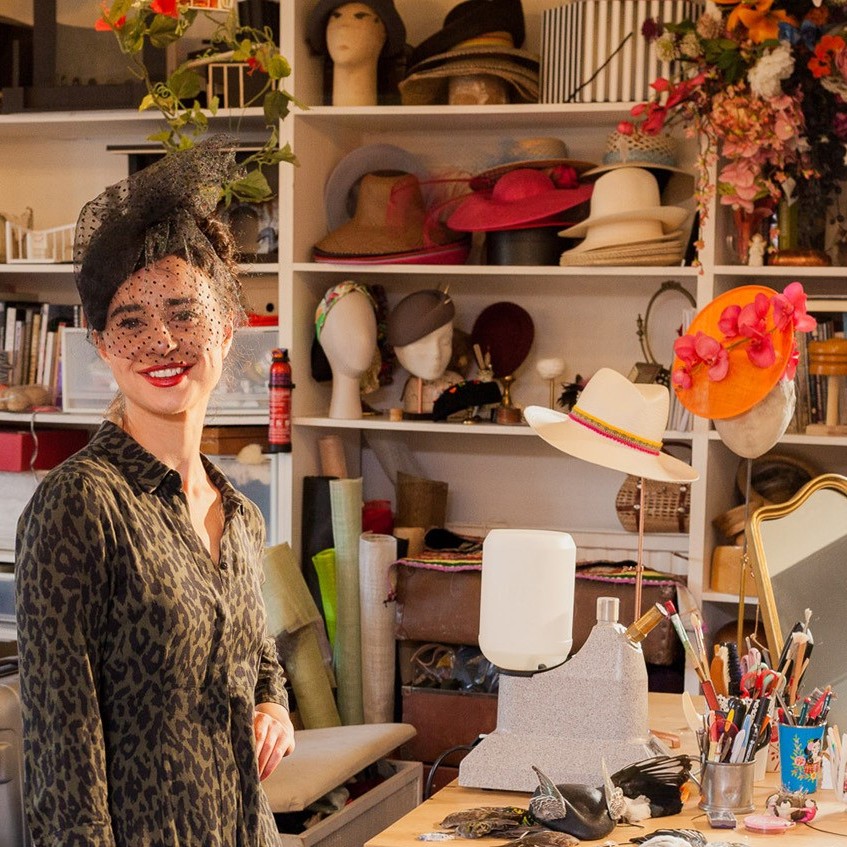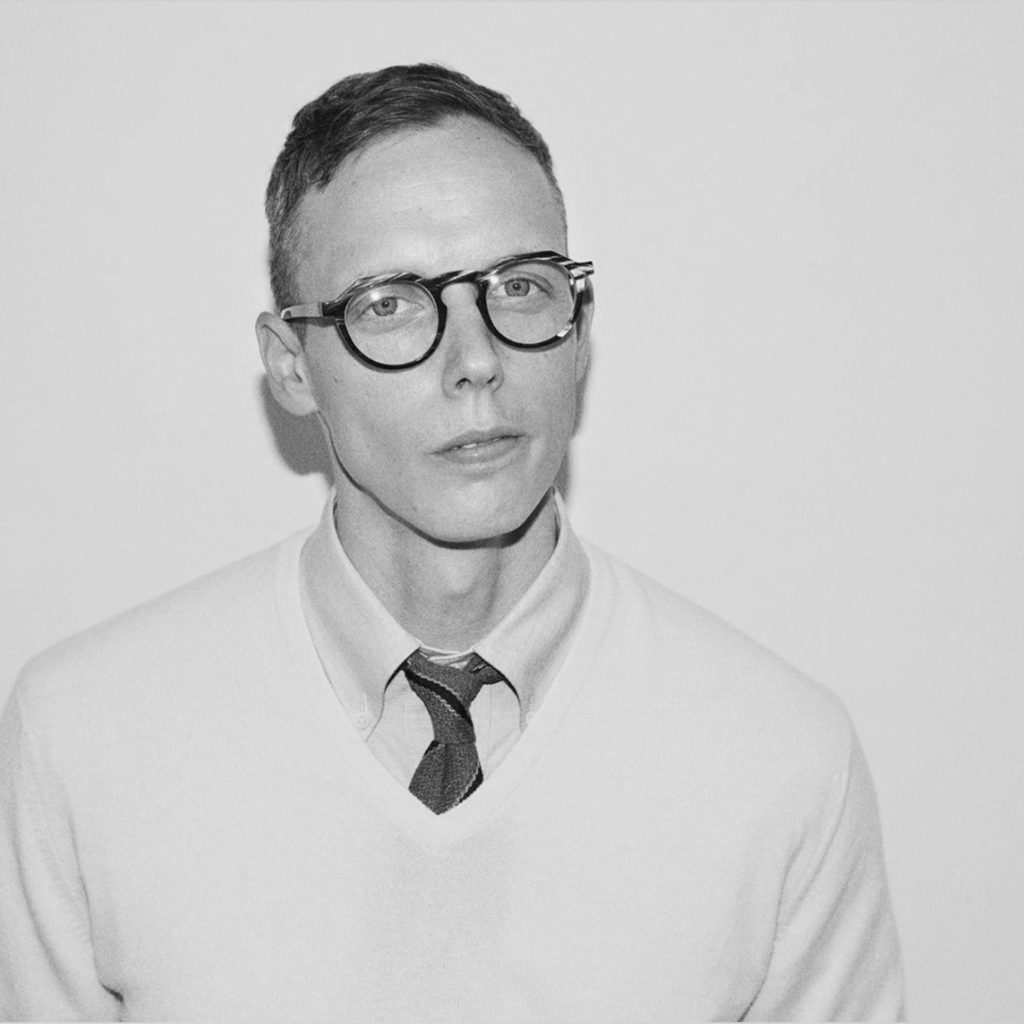Eleanor Bolton Jeweller - London, UK
Sailors, Scouts and Girl Guilds all know about knots, now Eleanor Bolton uses historical knotting and coiling techniques to make contemporary jewellery. Eleanor Bolton keeps these traditional crafts alive and relevant, while pushing the boundaries in her jewellery.
Zoneone Arts brings Eleanor Bolton to you.
You studied at the Royal College of Art and on graduation, started your own label. This is a huge step to make please discuss this monumental move and your belief in your art?
It was a really natural transition, I got commissions and invites to exhibit off the back of my MA graduation show so I just did it. I networked, gained contacts and some loyal customers whom still sell to today. There was no plan, when I started I was also working part time in a shop to pay the rent and made jewellery from a little table in the corner of my lounge. I think the momentum I had during the last year of my masters spurred me on and not so much my belief in my work, but others wanting to purchase or exhibit it that kept me going. After about a year I set up my first studio and have continued ever since.

Half Coil
Your jewellery is full of line and details discuss?
My designs come from a focus on an intuitive and sensitive approach to the micro details of making processes, as well as to the precise scale of the pieces. This attention to detail, combined with the innovative use of the materials define my approach. The simple line is a key detail across the work, combined with blocks of colour, this is what I think gives it strong aesthetic appeal.
When and how did you decide to combine coiling and hand stitching, also how were you introduced to these techniques?
While I was studying at the RCA I found I got frustrated with metals which where to that point were the main materials I worked with. I started to play with textile techniques and fabrics, ropes and cords and enjoyed creating 3D forms in a more direct way. Playing with stitching into the rope and forming it into coils came from this experimental period.
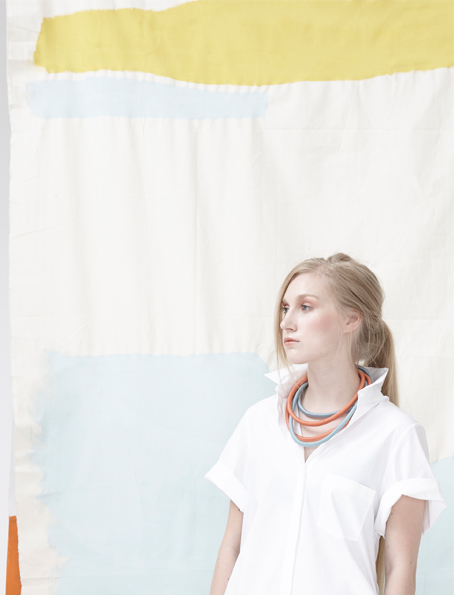
Can you comment on your colour combinations?
Colour inspiration for the collections often comes from fine art and the bold use of colour and textile techniques marry to create statement tribal and nautical inspired jewellery. When I’m designing I tend to start with a colour palette which is often inspired by a painting or artwork or artist. For example the colours for the Paint Box collection was inspired by the works of David Hockney and Friedel Dzubas. The colours both artists used are bold and also reminded me of hot summers in mediterranean countries. I wanted a summery feel to that collection and looking at those artists works provided the colour palette of turquoises, blues, rusty oranges, mint greens and yellows, which formed the starting point for the the collection. Previous collections have also been inspired by the colours of Mondrian and Sonia Delaunay to name a few.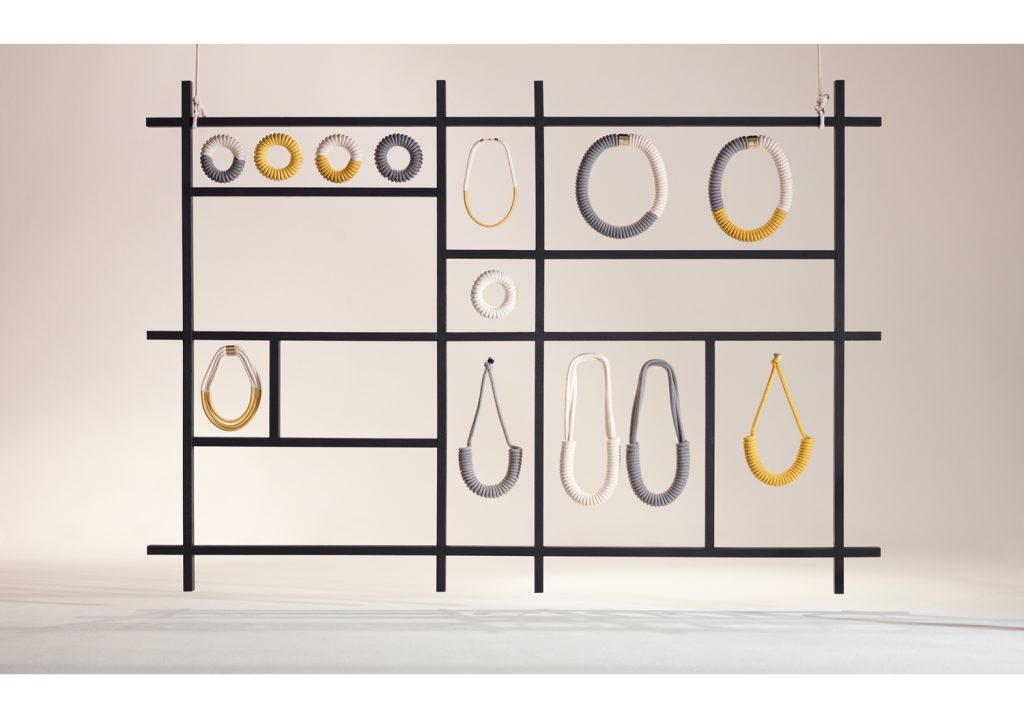
Mondrian Collection
Expand on the use of pattern through the coiling?
I wouldn’t say I use the coiling as a pattern as such, but more as a way to create three dimensional form, take the line of a piece from 2D to 3D. It allows me to create sculptural yet lightweight tactile jewellery. There is a simplicity to the coiling that I find so pleasing. It mimics many forms found in nature.
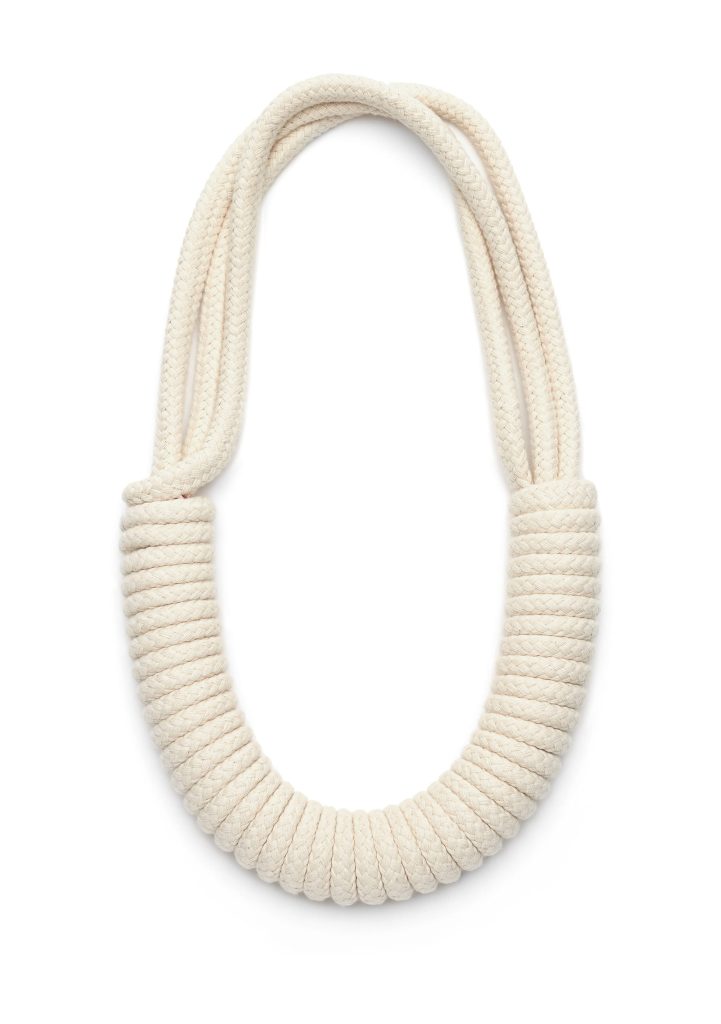
Multi Strand Necklace, Natural
Discuss the way you have used and added metal to your pieces?
The metal elements often form a point of contrast – the shiny hard gold or silver against the soft matt finish of the cotton rope or yarn is part of playing with textures and highlighting the materials different qualities. Sometimes however metal elements are also added purely for functionality. Sometimes only a metal clasp will do!
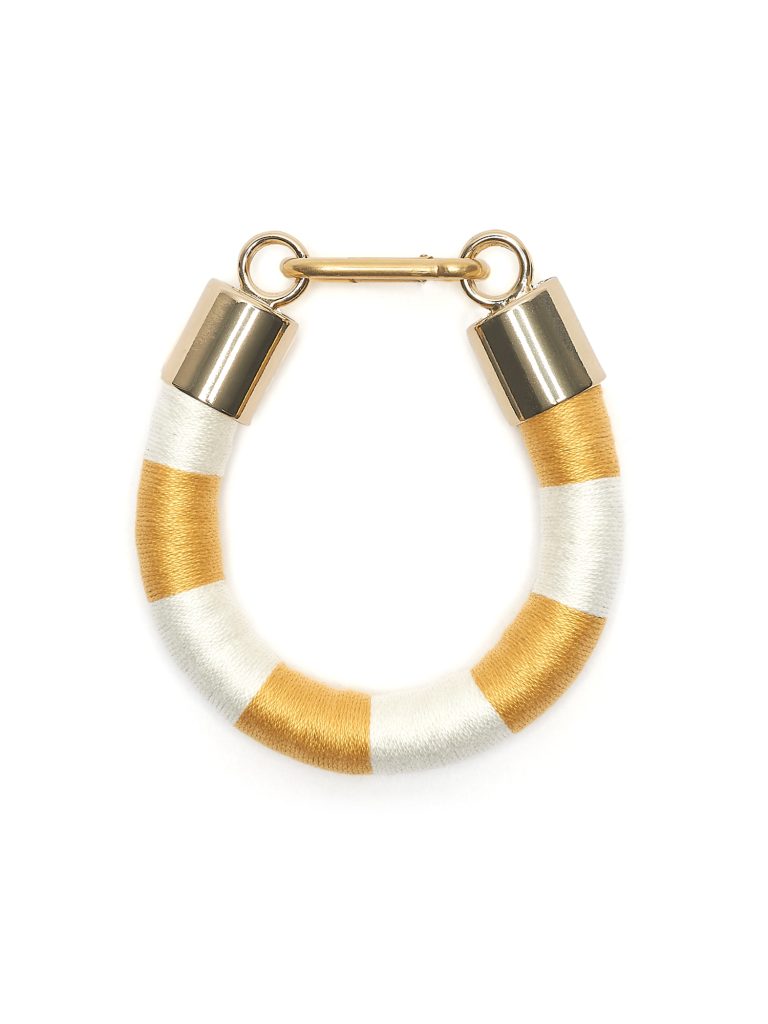 Thick Stipe Bracelet, Honey and White
Thick Stipe Bracelet, Honey and White
How influenced do you need to be by current fashions and colours?
Not consciously, I don’t go out to follow trends with my work. However as a person in the world I am always taking in what I see and so inspiration may come from a current fashion or trend colour fuzed with another idea or visual reference.
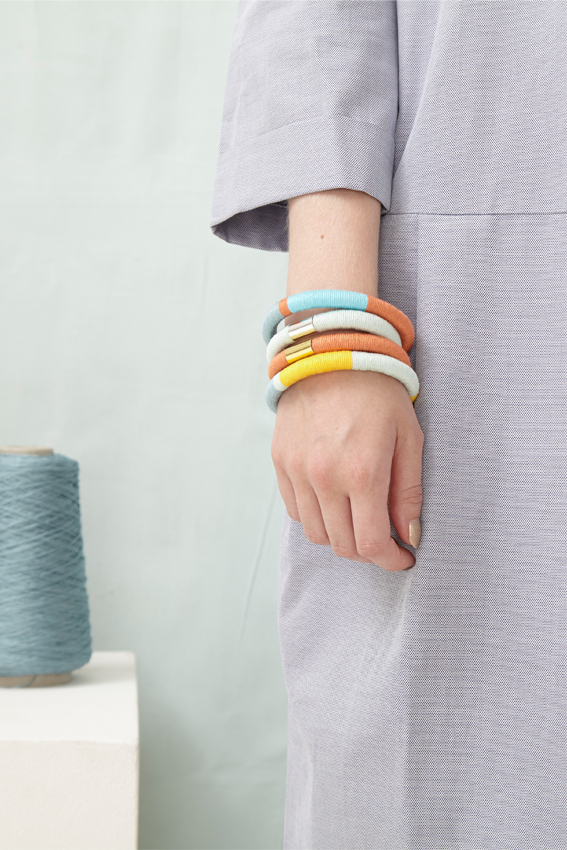
Bangles stacked
When do you use bright colours or is it seasonal?
Bright colours come and go depending on the inspiration for a collection and the materials I am using. For a while I was enjoying working with some fluorescent rope -really bright reds and yellows. But I’m currently favouring more muted tones.
Comment on the fine details in Dora?
The Dora is a short necklace combining either a block of sandstone or honey coloured yarn flanked by dark grey and white stripy sides and finished with a gold plated or silver ends and clasp. I love playing with combining yarn colours in this way, the stripes especially – a hint to the nautical associations of the rope core.

Dora, Honey
You have also collaborated with other brands and their collections. Discuss you work with Wéngko and Molé.
Resort wear brand Wéngko Molé approached me about collaborating on a range of rope belts to work with their digitally printed silk garments. It was a lovely project to work on, I worked closely with founder Christina Pistofidou to develop the collection that complimented their prints and worked across the collection.
Not only is your work beautiful and unique you are happy to share your techniques through classes – expand on this.
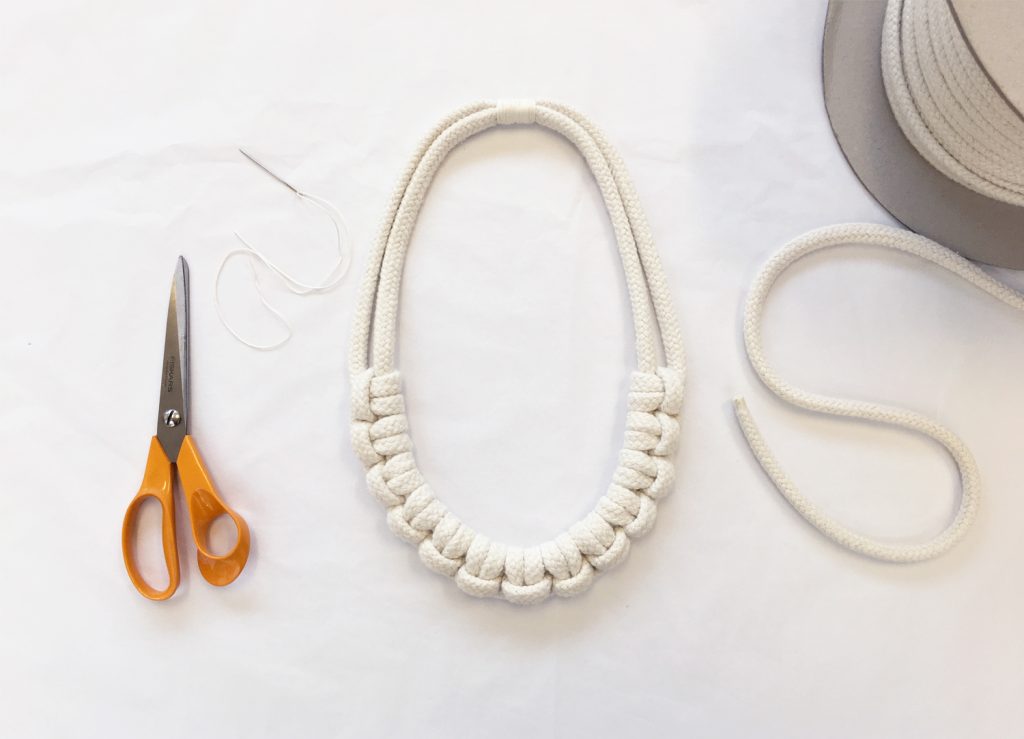
Half Hitch Necklace
Teaching the creative workshops is a chance to share my knowledge, it’s fun and inspiring seeing the how the students take on different aspects of the techniques and take them in different directions. I don’t teach all of my techniques, I do keep some back for myself and the workshops are definitely just a taster session, a starting point for students to be creative with the textiles for jewellery under my guidance.

Please give us your thoughts on the importance to foster old crafts in a new way.
It’s so important, when you work with traditional crafts and materials putting a new spin on it keeps it fresh and exciting. Keeps them relevant. But it also sets you apart as an artist to be taking the traditional techniques and using them in new ways, trying to push the boundaries of the materials you use or using them in new ways.
Contact details:
Eleanor Bolton
studio@eleanorbolton.com
www.eleanorbolton.com
Instagram – @eleanor_bolton
Eleanor Bolton, London, UK
Interview by Deborah Blakeley, July 2018
Think a colleague or friend could benefit from this interview?
Knowledge is one of the biggest assets in any business. So why not forward this on to your friends and colleagues so they too can start taking advantage of the insightful information the artist has given?
Other artists you may be interested in:


